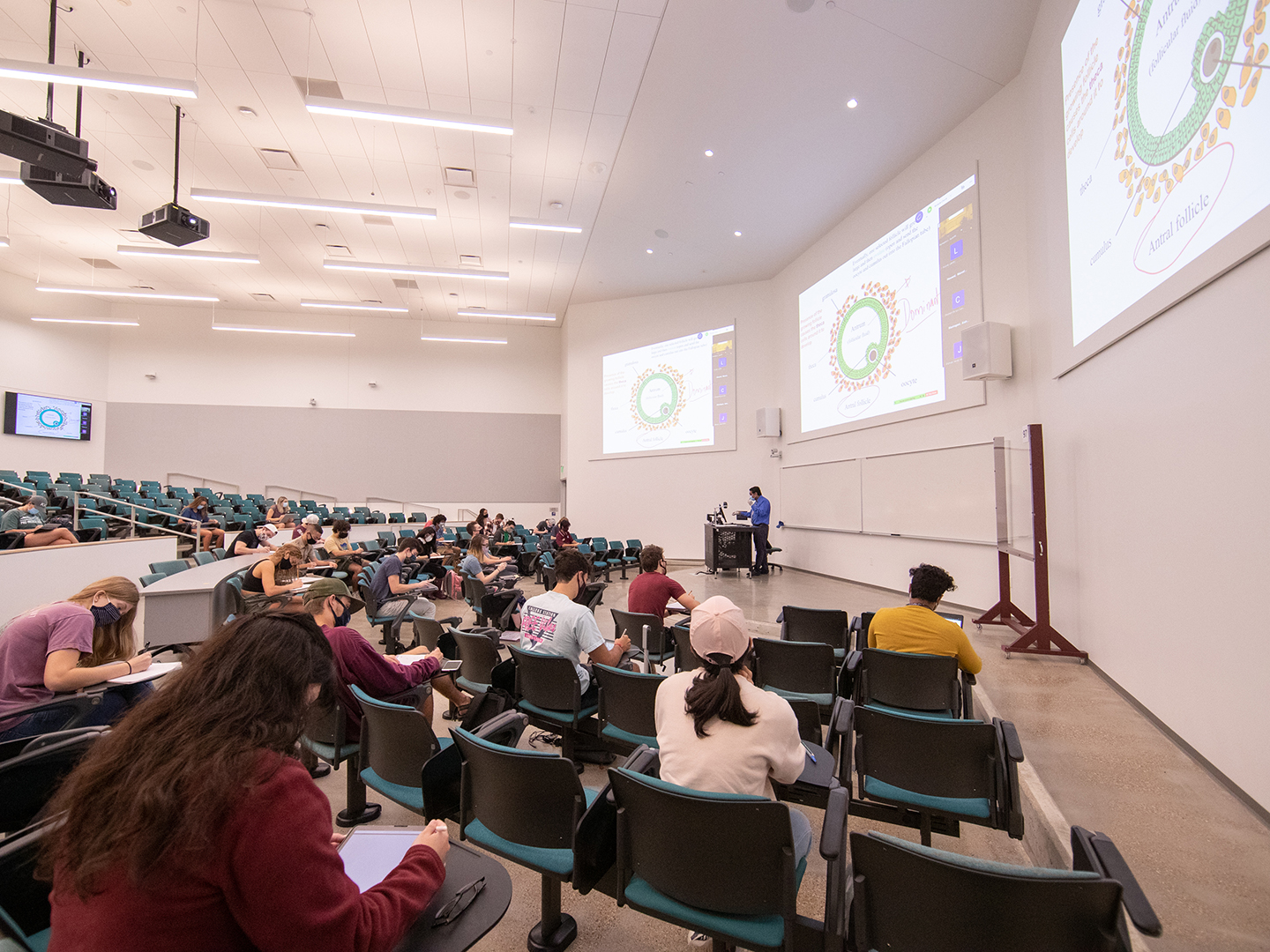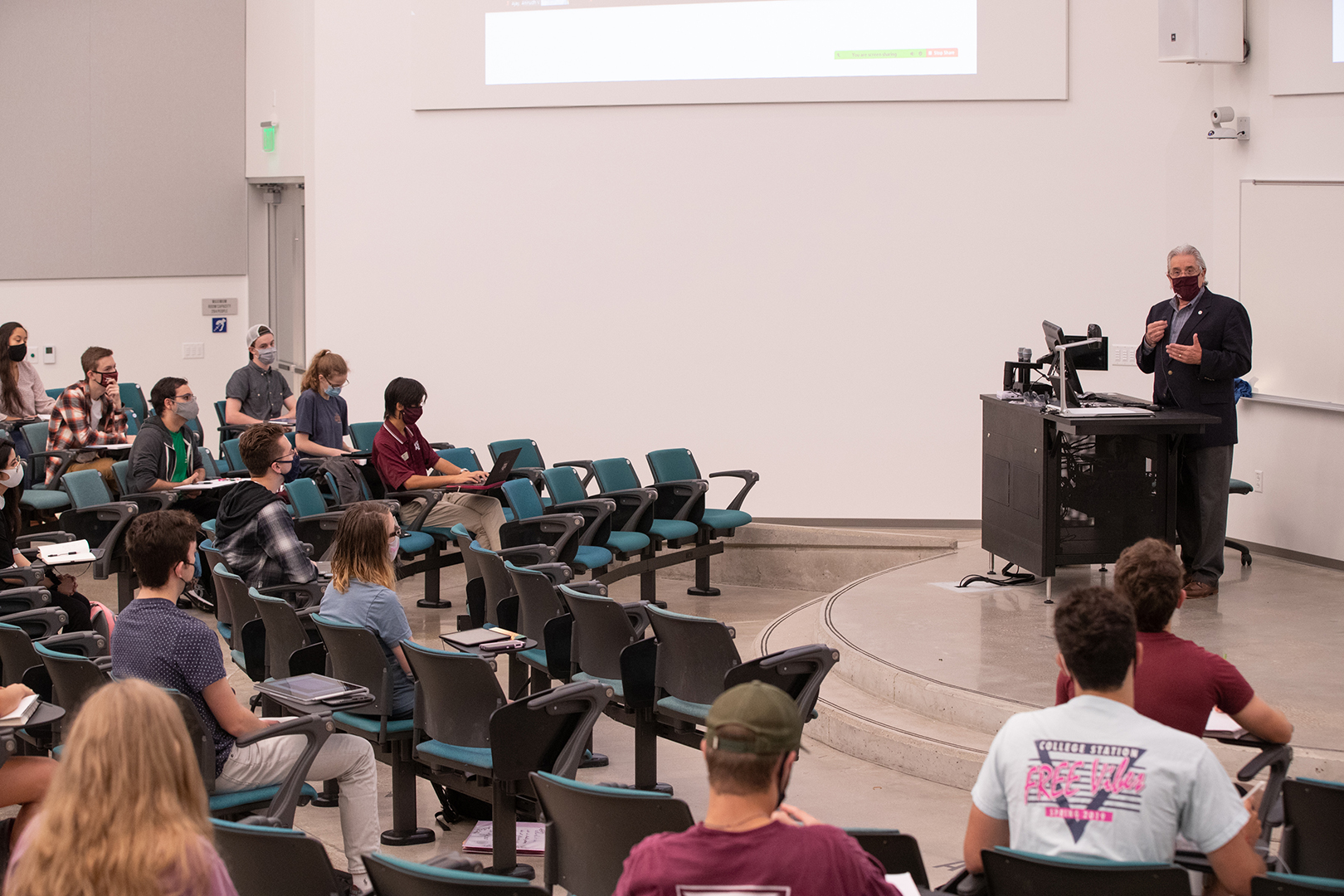CVMBS Professor Teaches In New Innovative Learning Classroom Building

Dr. Jayanth (Jay) Ramadoss, a tenured associate professor and director of the Perinatal Research Lab in the Texas A&M College of Veterinary Medicine & Biomedical Sciences’ (CVMBS) Department of Veterinary Physiology & Pharmacology (VTPP), is one of the first faculty members selected to teach in Texas A&M’s new Innovative Learning Classroom Building (ILCB).
The course “Physiology for Bioengineers” (VTPP 434) is a unique collaboration between the CVMBS and the College of Engineering’s Department of Biomedical Engineering. The course is directed by Ramadoss and is currently using a hybrid model, with some students attending in person and others participating via Zoom.
“ILCB, the new visionary Texas A&M educational hub, has metamorphosed the gloom surrounding COVID-19 with a torch of possibility, invigorating 200 bioengineering undergraduates on an exciting road toward a modernistic learning experience,” said Ramadoss, who has been recognized many times for his effective teaching practices.
In September, the class received a visit from CVMBS Dean Dr. John August, who emphasized the importance of biomedical engineering in the future of human and veterinary medicine.
“Having Dean August in the newly built classroom was a distinct honor,” Ramadoss said. “By his presence and by giving his valuable time, Dean August gave us a special experience. I was thrilled to teach in front of the legendary Dean August and hear his feedback after the class.”

“Having Dr. August visit the class emphasizes the importance of the CVMBS and College of Engineering collaboration and demonstrates the colleges’ laser focus on transformative education,” said Dr. Larry Suva, VTPP department head and one of three senior VTPP faculty members who serve as instructors for the course. “We are thrilled to work in such an amazing space.”
As August talked with the students, he discussed the important role biomedical engineers will play as part of the committee working to bring his vision of a new Small Animal Hospital to life. He recognized the unique view they will be able to provide on what the future of medicine looks like.
“I have worked to organize a solid balance between instructional and active learning; for example, for every two lectures, which themselves involve active-learning components to engage students, I hold an exercise I designed called APPL—Active Physiology Principles Learning,” Ramadoss said.
“Each week for the APPL, the students assume a role—for example, they could be an astronaut, researcher, physician, or scientist—and then the class solves a real-life problem in that field, which applies what they have learned in the previous two lessons,” he said.
In addition to enabling Ramadoss’ active teaching methods, the ILCB has many features that support teaching during the COVID-19 pandemic.
“Hybrid classes are pretty hard, but the new building has made it easy,” Ramadoss said. “It has also been a safe environment for teaching from an instructor perspective. The students are so amazing at following the university regulations and it has been a pleasure to teach in the new building despite the pandemic.”
###
For more information about the Texas A&M College of Veterinary Medicine & Biomedical Sciences, please visit our website at vetmed.tamu.edu or join us on Facebook, Instagram, and Twitter.
Contact Information: Jennifer Gauntt, Director of CVM Communications, Texas A&M College of Veterinary Medicine & Biomedical Sciences; jgauntt@cvm.tamu.edu; 979-862-4216


